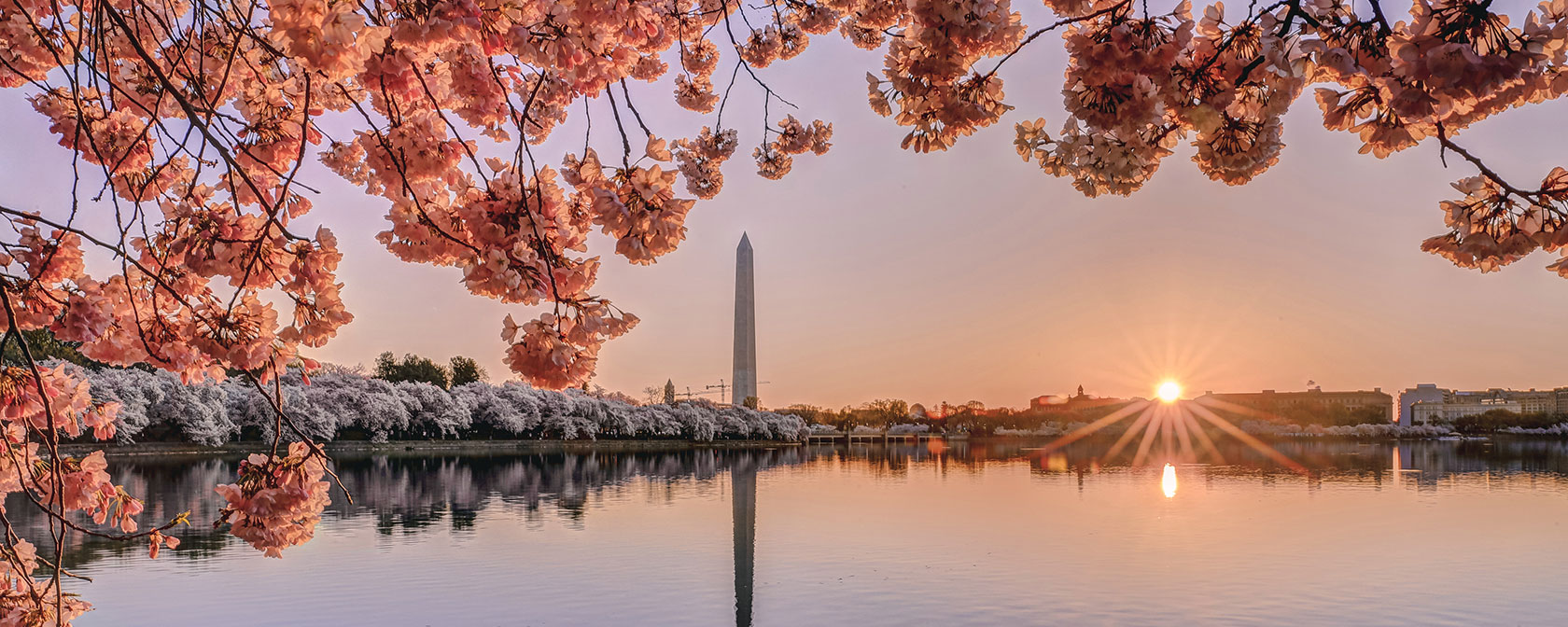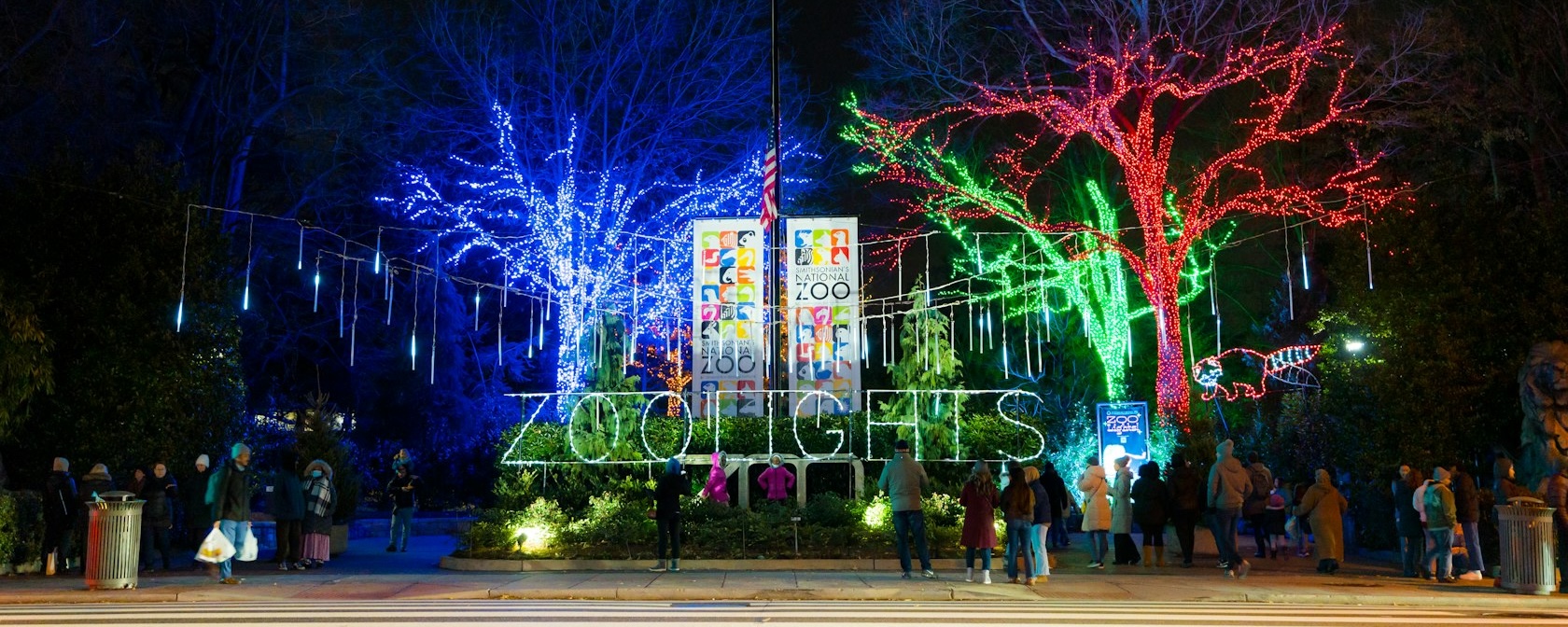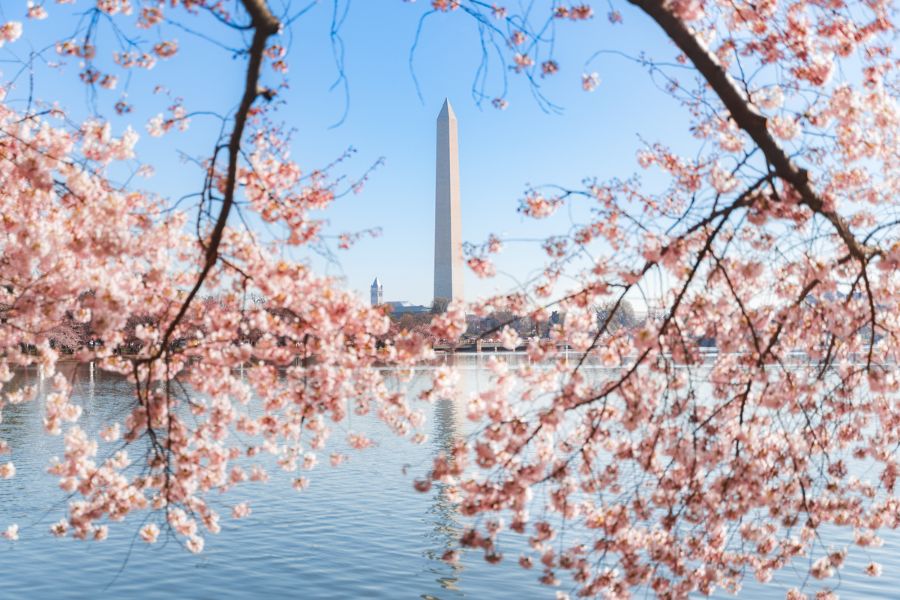
MAP IT
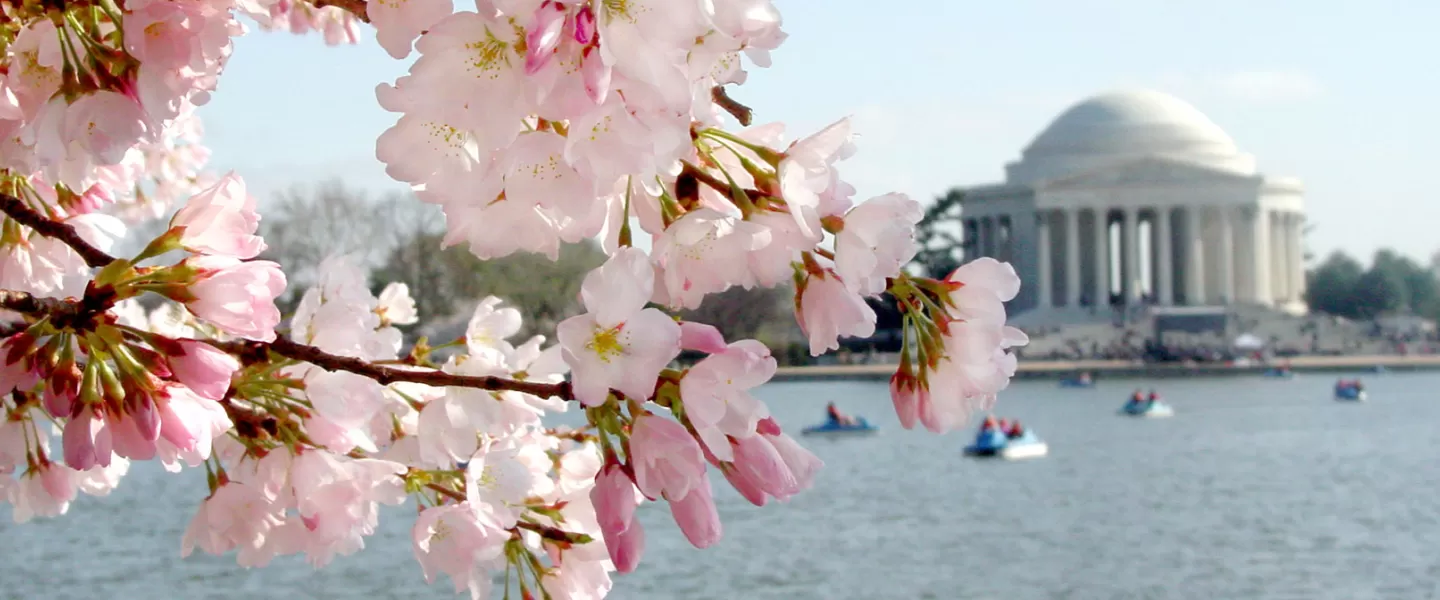
Things to Know About the Cherry Blossoms in Washington, DC
The cherry blossom trees are the stars of springtime in Washington, DC. Read on for info on peak bloom, best places to find blossoms and everything else you need to know before planning your trip.
The cherry blossom trees are without a doubt the stars of springtime in Washington, DC. Visit the District during this time and you’ll find the nation’s capital is outfitted in pink for the National Cherry Blossom Festival. Here are some must-knows as you plan to celebrate the blossoms during a visit to DC.
01
When do the cherry blossoms bloom?

This popular question has a different answer year-to-year. Over the last five years, peak bloom, which is when 70% of the flowers of the cherry blossom trees are open, has occurred in the second half of March. This year, peak bloom is predicted between March 28-31, according to National Park Service. Stay tuned for an updates regarding any changes to peak bloom.
Dig Deeper: You can compare peak bloom dates over the past 20 years thanks to the National Park Service, which tracks all stages of the blossoms.
The entire blooming period can last up to 14 days, which includes the days leading up to peak bloom. Each year, NPS predicts the official peak bloom and shares details on its website, which also indicates that “it is nearly impossible to give an accurate forecast much more than 10 days before the peak bloom.” The best viewing of the cherry blossom trees typically lasts four to seven days after peak bloom begins, but some blossoms can linger for up to two weeks under ideal conditions.
02
Where can you see the cherry blossom trees?
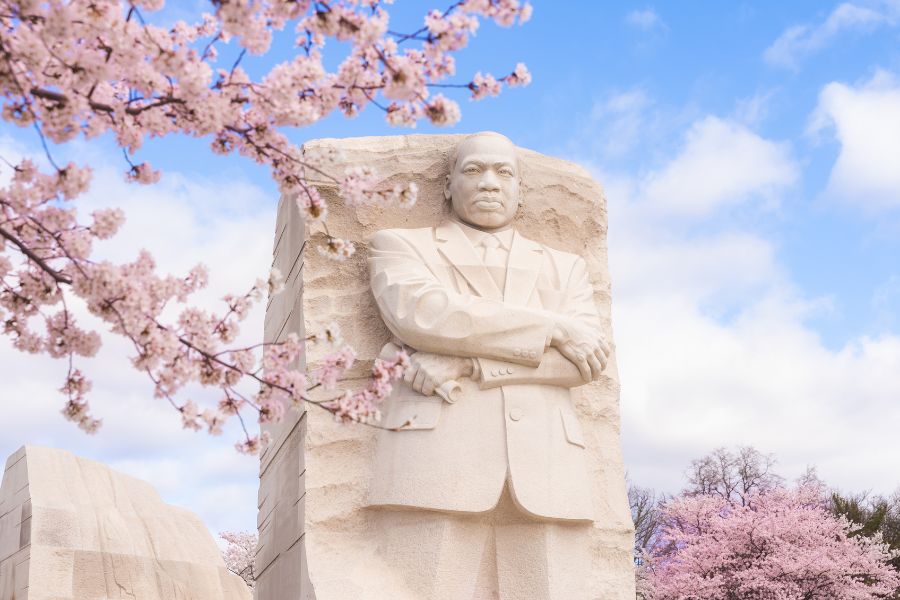
There are more than 3,700 cherry blossom trees along the National Mall and over 18,000 on National Park Service property within Washington, DC. The most popular place to visit them is at the Tidal Basin, which provides great photo ops near the Jefferson Memorial, Franklin Delano Roosevelt Memorial and the Martin Luther King, Jr. Memorial. The majority of blossoms are located in this area and along the shoreline of East Potomac Park, which extends all the way to Hains Point.
Meanwhile, small clusters of trees can be found along the National Mall, just northwest of the Lincoln Memorial and around the Washington Monument. Off-the-radar cherry blossom trees can be found at the National Arboretum, Anacostia Park, Dumbarton Oaks in Georgetown, Stanton Park and Oxon Run Park. Here's how to get to the cherry blossoms by bike, Metro or walking at all of DC's cherry blossom spots.
03
What time of day should you visit the cherry blossoms?
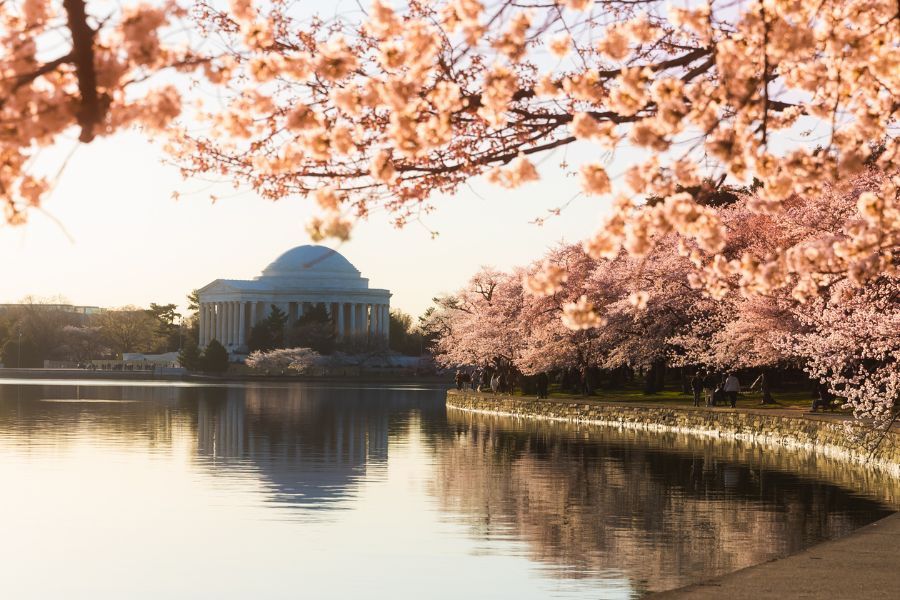
First off, there is no bad time to visit the cherry blossoms. Any time you get to see them is time well spent. During the spring season, the least busy time to visit the cherry blossoms is in the early morning or evening. You can expect more people on weekends and when the blooms are peaking.
Please do your part in helping to protect the National Mall and the cherry blossoms. We kindly remind you to look at the blossoms, but never pick them (it’s against the law).
04
What events are happening to celebrate the season?
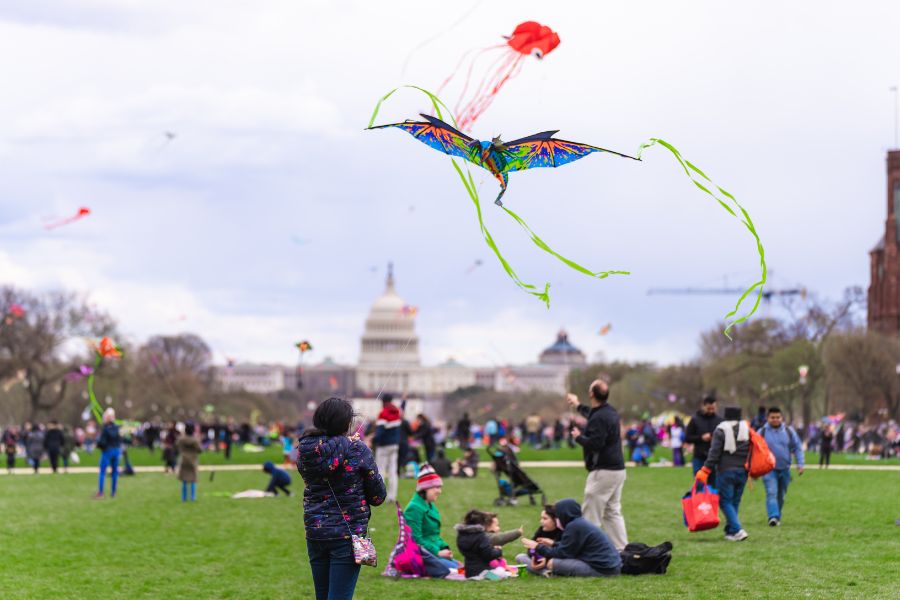
The National Cherry Blossom Festival is a citywide event that celebrates Japan's gift of cherry blossom trees to Washington, DC and all they symbolize for the city. This year's festival features a range of spectacular celebrations, including the Opening Ceremony, the Blossom Kite Festival, the National Cherry Blossom Festival Parade® and Petalpalooza®. Local restaurants even get into the spirit with the Cherry Picks program, while DC-area hotels offer blossom-themed packages, deals and discounts.
05
Why does DC have so many cherry blossom trees?
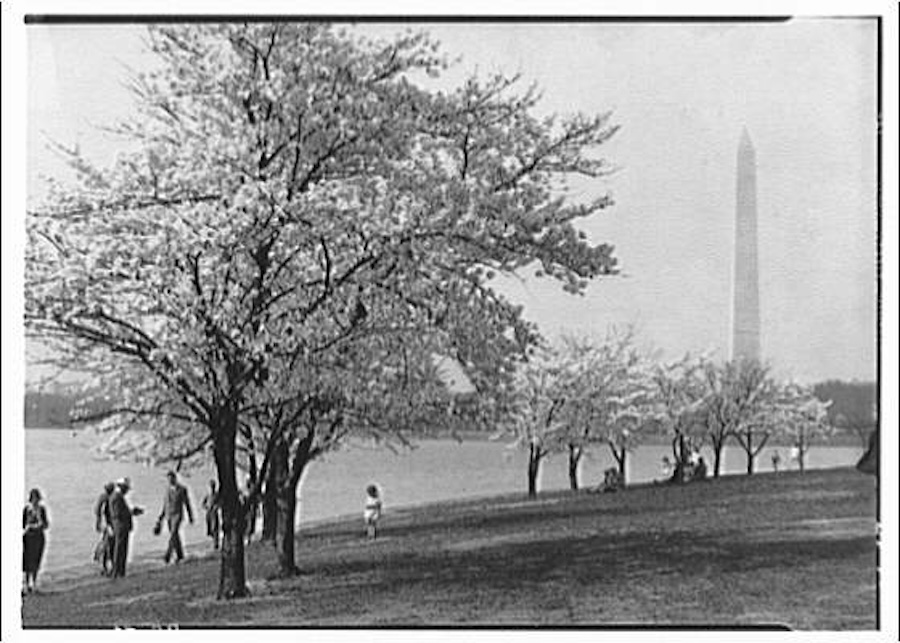
Horydczak Collection, ca. 1920-1950, courtesy of the Library of Congress
Washington, DC's cherry blossoms have more than a century of history, beginning with the first gift from Mayor Yukio Ozaki of Tokyo in 1910. Unfortunately, these trees became diseased but they were replaced in 1912 with over 3,000 new plants. A few dozen of the original Tidal Basin trees still bloom each year and have been supplemented with thousands more throughout the District.
The cherry blossoms continue to endure as a symbol of spring in the nation's capital and friendship between the people of the U.S. and Japan. In 2026, the Japanese Embassy will gift 250 new trees in honor of America's 250th birthday.


